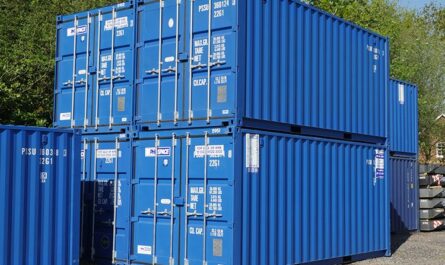Robots have infiltrated nearly every industry, from manufacturing to healthcare. However, one area that is on the verge of a robotic revolution is agriculture. With ongoing labor shortages and the need for increased efficiency and productivity, farms around the world are increasingly adopting robots and autonomous systems to automate many farming tasks. This article explores how agriculture robots are transforming farming practices.
Early Adoption of Robots
While fully autonomous farming may still be years away, early robots for agriculture are already proving their worth on farms of all sizes. Simple tasks like weeding and crop monitoring were some of the first to be automated. Weeding robots use cameras, sensors and machine learning to identify and remove weeds without harming crops. Crop monitoring robots drive autonomously through fields to photograph and collect data on crop health, detecting issues like diseases or nutrient deficiencies much earlier than human inspection.
Another early form of agricultural robot is the self-driving tractor. Autonomous tractors use GPS and other technologies to steer and operate themselves for tasks like plowing, planting, spraying and harvesting with precision. This allows a single farmer to manage much larger fields and optimize resource use like water, fertilizers and pesticides. Some estimates indicate autonomous tractors can increase yields by as much as 25% compared to manual operations while reducing costs.
Robots for Precision Farming
Precision or smart farming using robotics and IoT sensors is revolutionizing how crops are grown and cared for. Smart farming employs robotics, sensors, telemetry and analytics to tailor each step of the growing process for individual plants. For example, robots mounted with cameras, spectroscopes and thermal sensors scan fields to assess the specific needs of plants.
Areas needing more or less water, nutrients or pest treatment are identified down to a plant-by-plant level. This enables extremely targeted application of resources rather than blanket spraying or irrigation of entire fields. Studies show precision farming using robotics and IoT can increase crop yields by 20-30% while reducing agricultural inputs and their environmental impact by a similar margin. It helps farms attain new levels of productivity, sustainability and profitability.
Automating Labor-Intensive Tasks
Many routine farming tasks remain stubbornly labor-intensive and difficult to automate until now. Picking fruits and vegetables by hand is especially challenging given the delicate nature of produce and need for human-level discernment. Recent developments in robotics, computer vision and artificial intelligence are changing this. Robots can now identify and grasp ripe fruits or vegetables without bruising them.
Strawberry harvesting robots use cameras, sensors and sophisticated algorithms to spot, pick and collect ripe berries at rates comparable to human pickers. Similar blueberry harvesting robots have been field-tested. Researchers are also developing tomato, cucumber and grape picking robots that operate day and night with precision, speed and consistency beyond human abilities. Such robots have the potential to address acute farm labor shortages and stabilize seasonal wage costs while increasing harvest efficiencies.
Milking, Shearing and Livestock Management Robots
Dairy farms have embraced robotic milking solutions for their around-the-clock milking needs without additional hired labor costs. Intelligent milking robots use sensors to identify cows, monitor their milk production and health, and perform the entire milking process autonomously at the cow’s convenience. This improves animal welfare while boosting milk yields. Robotic dairy systems have become mainstream on farms worldwide.
Sheep shearers are also going robotic with new generations of shearing robots able to recognize sheep, securely hold them in place and perform faster and gentler shearing than humans. Cattle ranches employ Agricultural Robots livestock tracking collars, feeding stations and handling equipment integrated with software for enhanced herd health monitoring, performance tracking and targeted supplementation. This boosts productivity of large livestock operations.
Agricultural Drones for Inspection and Spraying
Drones have proved a boon for conducting precision agricultural operations over large areas efficiently. Agricultural drones equipped with cameras, sensors and smart algorithms can monitor entire fields to assess crop and soil conditions or detect pests and diseases before any outbreak. Thermal imaging and multispectral drones swiftly identify issues like heat stress, moisture stress or nutritional deficiencies invisible to the eye.
Drones also excel at targeted spraying of fertilizers, fungicides and pesticides across fields. GPS-guided drone spraying achieves cost savings of up to 90% compared to traditional methods while using much smaller volumes of agrochemicals. Drone spraying maximizes treatment effectiveness and minimizes environmental contamination compared to ground-based methods. Their widespread adoption addresses important environmental sustainability goals in agriculture globally.
Overcoming Challenges and Future Prospects
While agricultural robots hold immense promise, there are still challenges to address. Costs remain substantial for widespread deployment though some repetitive tasks already pay off. Robots struggle when conditions change or in unstructured environments, limiting their autonomy. Ensuring robots and autonomous systems operate safely around humans and animals is critical. Data security and privacy also require oversight as digitization increases.
However, ongoing R&D is solving many issues. With falling prices, agricultural robots and AI are poised to revolutionize farming practices worldwide. By 2030, robotics in agriculture could generate $20-30 billion annually in worldwide market value and add 0.5-1.5% to global agricultural output. For farmers, robots bring increased productivity, optimized resource use, lower costs and stable earnings. For consumers, it ensures a steady food supply sustainably and affordably. Agricultural robots are set to transform global food production and rural economies significantly.
*Note:
1. Source: Coherent Market Insights, Public sources, Desk research
2. We have leveraged AI tools to mine information and compile it


